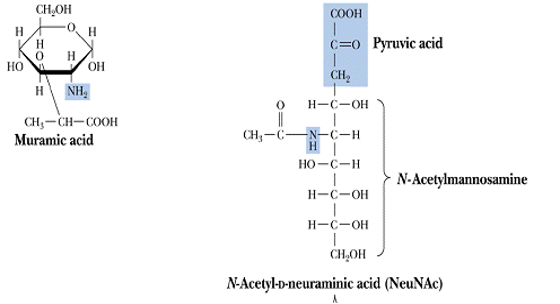Case details
A 6-year-old boy is seen by a pediatrician because his parents are concerned about his aggressive behavior, hyperactivity, and a loss of language skills. He also has recently become increasingly unsteady on his feet and has experienced a recent seizure. Slight facial feature coarsening is noted. In which of the following processes is this child most likely to have a disorder?

A. Mobilization of glycogen
B. Gluconeogenesis
C. Salvage of purine bases
D. Degradation of glycosaminoglycans
E. Cholesterol metabolism
ANSWER
Answer- D- Degradation of Glycosaminoglycans
Glycosaminoglycans are degraded by lysosomal hydrolases. A deficiency of one of the hydrolases results in Mucopolysaccharidoses. These are hereditary disorders in which the glycosaminoglycans accumulate in tissues, causing symptoms such as skeletal and extracellular matrix deformities, and mental retardation.
The patient is exhibiting the classic symptoms of Sanfilippo syndrome, which occurs due to a deficiency in one of four different lysosomal enzymes that breakdown glycosaminoglycans leading to the buildup of heparan sulfate and dermatan sulfate in lysosomes.
The accumulation of these glycosaminoglycans, heparan sulfate and dermatan sulfate in lysosomes leads to severe neurologic and mental impairment that results in death usually by the end of the second decade of life.
There cannot be a defect in the mobilization of glycogen, which is commonly manifested as glycogen storage disease. The characteristic features of glycogen storage diseases are hypoglycemia, muscular defects and organomegaly depending upon the site of defect.
The defects in the gluconeogenesis are not manifested as the clinical picture provided in the case history. The enzyme deficiencies of the pathway of gluconeogenesis are mostly manifested as hypoglycemia and ketosis.
The hyperactivity and aggressive behavior can be seen in Lesch Nyhan syndrome, a defect in the salvage pathway of purine bases, but the other symptoms are not typical of this syndrome.
These symptoms are also not typical of the defect in cholesterol metabolism.
Thus the right option is a defect in the degradation of glycosaminoglycans.




